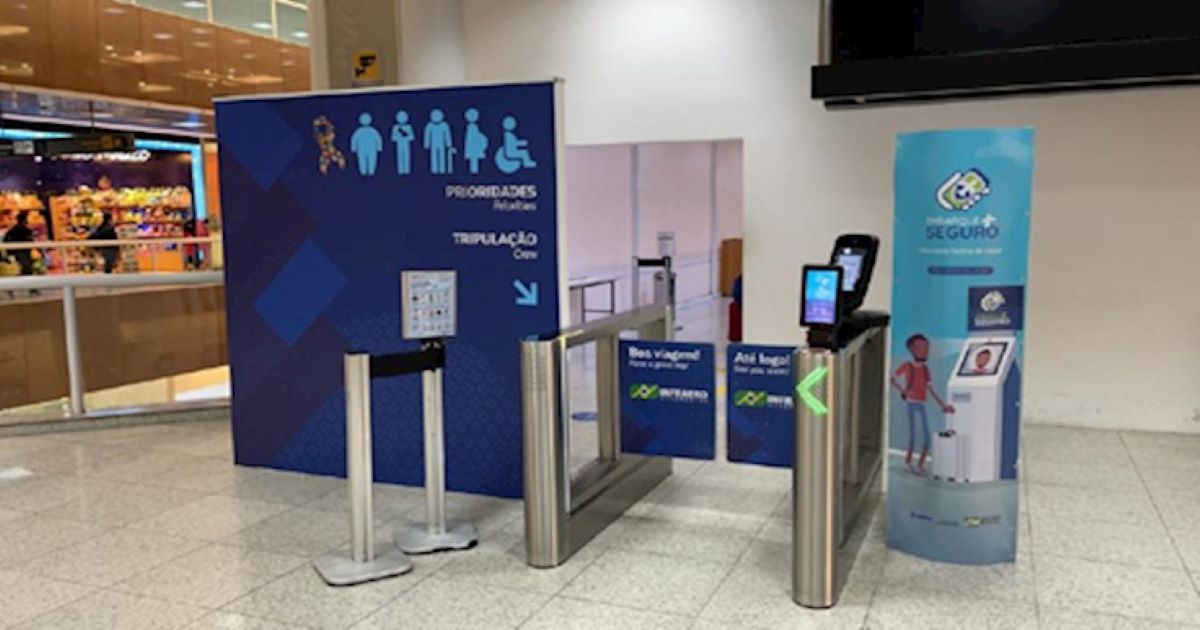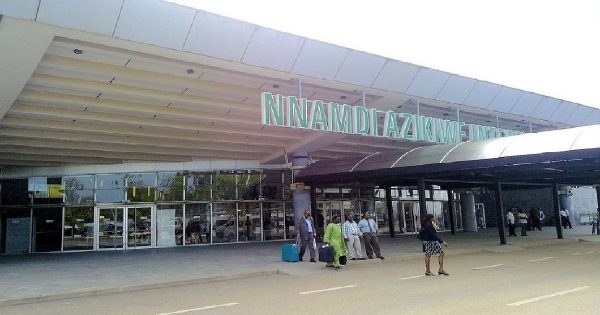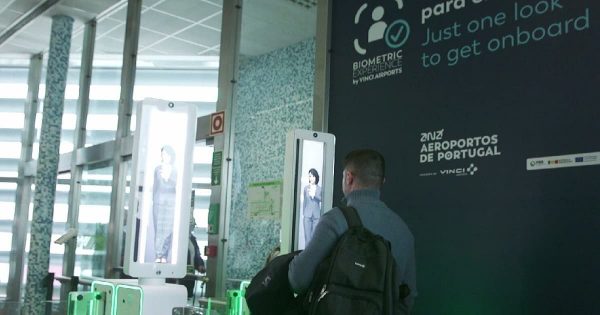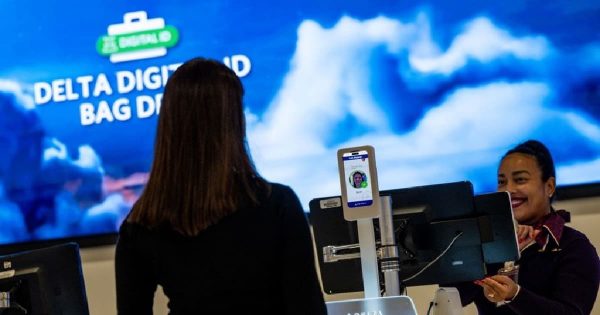The air bridge between Rio’s Santo Dumont (SDU) and Sao Paulo’s Congonhas (CGH) airports has started using biometric boarding for passengers.
The new facial recognition system will allow passengers to board the aircraft without paper documents.
Facial recognition is used at three points:
- check-in
- to access the boarding area
- to board the aircraft
At check-in, the system validates the passenger biometrics with government databases.
To access the boarding area and to board the aircraft, high definition cameras check the passengers live facial biometrics with the database.
The main benefits are that passengers do not need to present any paper documents – just their face – and boarding the aircraft should be faster.
Initial figures show the average boarding time was down from 7.5 to 5.4 seconds per passenger.
To start with, it is not compulsory and passengers can still chose to use their documents instead of their biometrics.
The facial recognition system, part of Brazil’s Embarque + Seguro 100% Digital program, has been well tested. Over 6,200 passengers participated in the program’s test phase at seven airports nationwide between October 2020 and January this year.
Three airlines using biometric boarding
Three airlines are using the system: Azul, Gol, LATAM.
Each airline is able to adopt its own procedures for the biometric registration and validation of passengers.
With GOL, passengers register and check-in on its app.
With Azul and LATAM, passengers register and check-in at self-service kiosks.
Ponte Aereo
The air bridge between Rio and Sao Paulo is really busy. For example, on 22 August 2022, 49 flights are scheduled from Rio to Sao Paulo – 12 with Azul, 17 with GOL, 20 with LATAM.
AZUL and LATAM use A320 family aircraft with a maximum of 174 seats. GOL fly 737-800s with 186 seats.
That means about 8,500 passengers that day could make the trip.
The flight itself is a mere hop of 360 km and has a planned flight time of about 1 hour.
Supplier
Serpro, a Brazilian state-owned face biometrics firm, developed the system in partnership with the Brazilian Ministry of Infrastructure and Infraero (the operator of the two airports).
N.B. Image credit: Infraero







